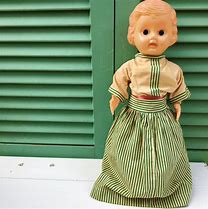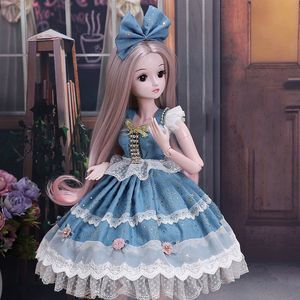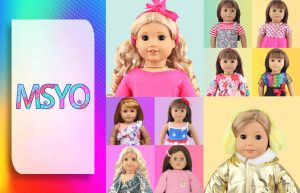Dolls, those miniatur e reflections of ourselves, have captivated hearts for centuries. From the earliest crudely crafted figures to the intricately detailed creations of today, dolls have held a special place in our lives. Whether they were cherished playthings in childhood or coveted collectibles in adulthood, dolls have a unique ability to evoke memories, spark imagination, and connect us to the past. Let’s embark on a journey through time, exploring the fascinating history of dolls and their enduring charm.
e reflections of ourselves, have captivated hearts for centuries. From the earliest crudely crafted figures to the intricately detailed creations of today, dolls have held a special place in our lives. Whether they were cherished playthings in childhood or coveted collectibles in adulthood, dolls have a unique ability to evoke memories, spark imagination, and connect us to the past. Let’s embark on a journey through time, exploring the fascinating history of dolls and their enduring charm.
From Cradle to Collector: The Doll’s Journey
Dolls have always been more than just toys; they are companions, confidantes, and symbols of childhood innocence. They have witnessed countless games of pretend, offered solace in moments of loneliness, and provided a platform for children to explore their own identities and dreams. The earliest dolls were simple representations of human forms, fashioned from wood, clay, or even cloth. As civilization progressed, so did the artistry of dollmaking. Materials like porcelain, bisque, and wax became popular, allowing for greater detail and realism. These early dolls were often heirlooms, passed down through generations, carrying with them the whispers of childhood laughter and the weight of family history.
As time went on, dolls became more than just toys; they became objects of beauty and status. Elaborate costumes, intricate accessories, and even miniature furniture were created to adorn these miniature masterpieces. Dolls began to reflect the fashions and trends of the day, offering a glimpse into the social and cultural landscape of their time. From the elegant ladies of the Victorian era to the stylish flappers of the Roaring Twenties, dolls mirrored the changing face of society. The rise of mass production in the 20th century brought dolls to a wider audience, making them accessible to children from all walks of life. From Barbie to Raggedy Ann, these iconic dolls captured the hearts and imaginations of generations.
The journey of the doll is not limited to childhood. For many, the fascination with dolls extends into adulthood. The world of doll collecting is a vibrant and diverse one, encompassing everything from antique dolls to contemporary creations. Collectors seek out rare and unique dolls, appreciating their artistry, history, and cultural significance. The value of dolls can range from a few dollars to tens of thousands, depending on their age, condition, and rarity. Whether it’s a cherished childhood memory or a passion for the art of dollmaking, dolls continue to hold a special place in the hearts of collectors and enthusiasts alike.
Tiny Treasures: Dolls Across the Ages
Looking back through time, we see how dolls have reflected the changing world around them. Ancient Egypt, known for its elaborate art and craftsmanship, produced dolls made of wood, cloth, and even papyrus. These dolls, often found in tombs, were believed to accompany the deceased into the afterlife. In ancient Greece and Rome, dolls were made of terracotta, ivory, and wax, and were often used in religious ceremonies and rituals. The Middle Ages saw the rise of rag dolls, simple but beloved by children of all social classes. These humble creations were often made from scraps of fabric and filled with straw or sawdust, reflecting the resourcefulness and ingenuity of the time
.
The Renaissance period brought a renewed focus on realism and artistry. Dolls crafted during this era were often made of porcelain or bisque, and featured delicate facial features and elaborate clothing. These dolls were not just playthings; they were prized possessions, reflecting the affluence and sophistication of their owners. The Victorian era saw a boom in dollmaking, with dolls becoming increasingly elaborate and detailed. From the beloved “Kewpie” dolls to the intricately dressed fashion dolls, Victorian-era dolls captured the spirit of the time, with their emphasis on elegance, refinement, and the importance of appearances.
The 20th century brought about a revolution in dollmaking. Mass production made dolls more affordable and accessible to a wider audience. The development of new materials, such as plastic and vinyl, allowed for the creation of more durable and affordable dolls. This era saw the rise of iconic dolls like Barbie, Ken, and G.I. Joe, which became cultural phenomena, shaping the imaginations of children around the world. Today, the world of dolls is more diverse than ever, with dolls representing different cultures, ethnicities, and abilities. From the whimsical creations of independent dollmakers to the technologically advanced dolls of the 21st century, the story of dolls continues to evolve, reflecting the ever-changing world in which we live.

Dolls are more than just toys; they are a window into the past, a reflection of our culture, and a timeless symbol of childhood joy. Whether they are cherished heirlooms, prized collectibles, or beloved playthings, dolls have a unique ability to connect us to our history, spark our imaginations, and remind us of the enduring magic of childhood. So next time you encounter a doll, take a moment to appreciate its story, its artistry, and its timeless charm. For within that tiny figure, lies a world of wonder waiting to be explored.









